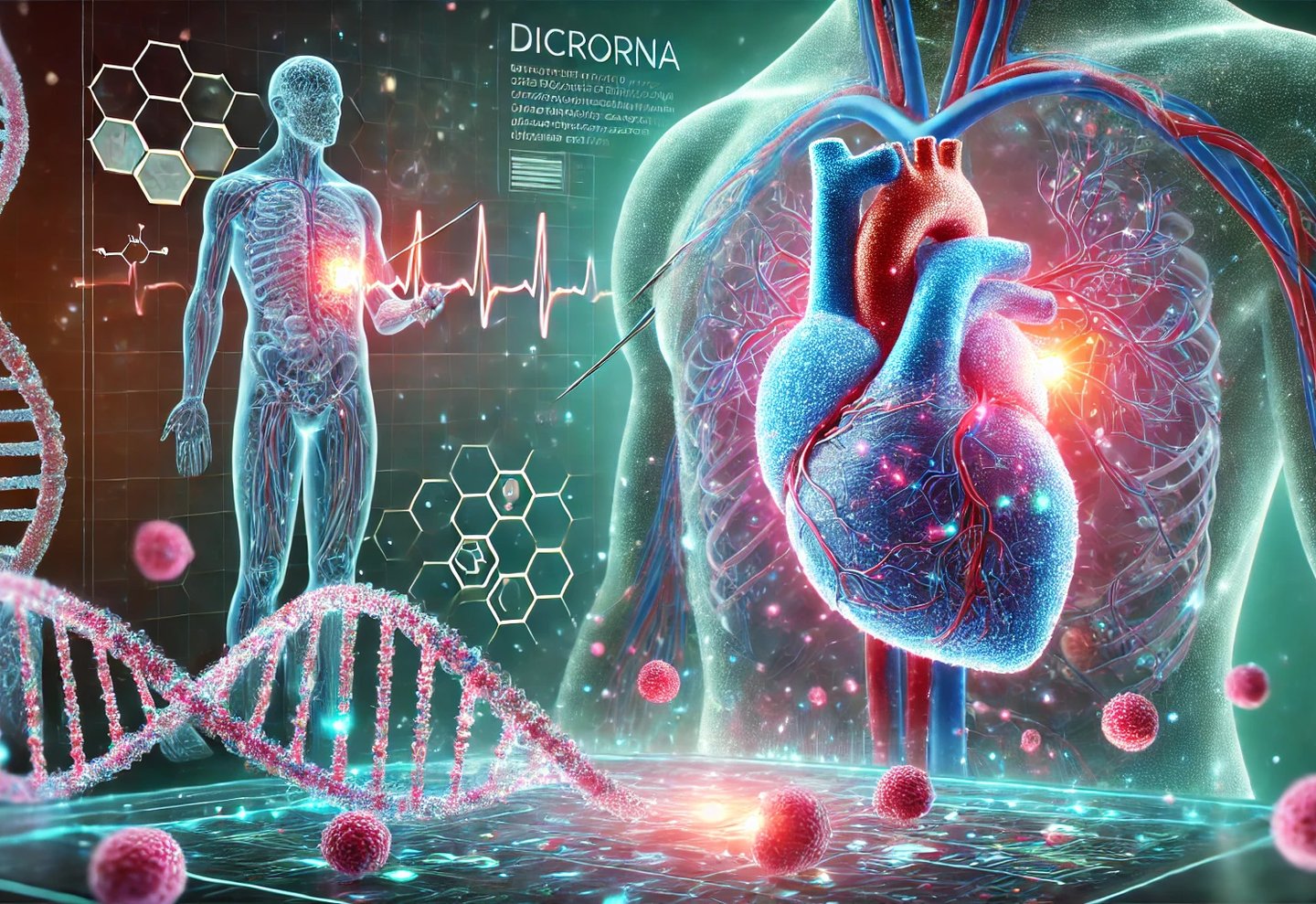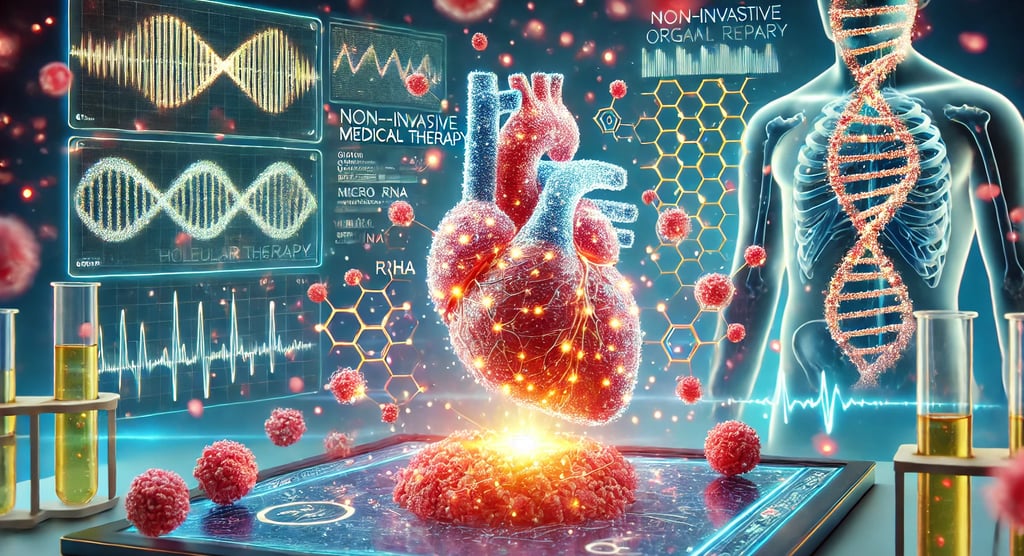MicroRNA: A Potential Shift from Organ Transplants to Repair
THINKING BEYOND
10/9/20245 min read


Health and Growth Desk


PIC: ChatGPT
The future of organ transplantation could undergo a dramatic shift, thanks to the recent advancements in microRNA (miRNA) research. While current medical practices rely heavily on organ transplants and post-surgical immunosuppression, a more profound understanding of miRNA suggests an entirely new frontier—organ repair, rather than replacement. This pivot could represent not just an incremental improvement in transplant medicine but a transformative leap toward regenerative healing, where damaged organs are repaired at a cellular level, eliminating the need for donor organs altogether.
MicroRNA: The New Blueprint for Organ Regeneration
MiRNA's unique ability to regulate gene expression at the post-transcriptional level presents a tantalizing possibility: using these small, non-coding RNA molecules to direct tissue repair in damaged organs. MiRNA operates as molecular "switches" that can turn off or degrade messenger RNA (mRNA), thereby controlling which proteins are made and in what quantity. But beyond simple gene regulation, miRNA has the capacity to rewrite how cells behave, proliferate, and heal. By tapping into this mechanism, we might unlock new ways to stimulate cells to repair organs from within, eliminating the need for traditional organ transplants.
A Hypothetical Shift: From Transplantation to In Situ Organ Repair
Let us imagine a scenario where a patient diagnosed with heart failure no longer needs to wait for a heart transplant. Instead, miRNA-based therapies could target the specific cellular pathways responsible for cardiac muscle regeneration. Through the administration of tailored miRNAs, it might be possible to trigger endogenous repair processes that encourage the heart's own cells to regenerate lost or damaged tissue. This approach could be applied to nearly any organ—kidneys, lungs, liver—potentially turning the field of organ transplantation on its head.
1. Regenerating Organs In Situ
What makes miRNA particularly compelling is its ability to target specific tissues and pathways. Imagine developing an miRNA cocktail that could reprogram the cells of a failing organ to kickstart repair mechanisms, without needing external or donor organs. For instance, the heart, typically incapable of significant regeneration, could be coaxed into regenerating cardiomyocytes through miRNA that regulates genes involved in cell proliferation and survival. This isn't far-fetched; in fact, initial studies have already shown that certain miRNAs like miR-1 and miR-133 can induce cardiac tissue regeneration in animal models.
What if we went a step further? Could miRNA be the tool that allows us to take naturally occurring tissue healing processes, such as those seen in species with high regenerative capacity (like salamanders), and apply them to humans? The potential of harnessing miRNA to guide such tissue repair mechanisms could revolutionize medical practice, leading to targeted, organ-specific treatments without the ethical and logistical challenges of organ donation.
2. Precision Healing: Organ-Specific miRNA Therapy
One of the most exciting prospects is the organ-specific nature of miRNAs. Each organ, from the liver to the pancreas, operates under distinct cellular dynamics, with unique gene expression profiles. MiRNAs, by their very nature, can fine-tune these profiles to promote healing in a way that respects the organ's specific biology. In liver disease, for instance, miR-122 is already known to play a central role in liver function and metabolism. Manipulating this miRNA could enhance the liver’s ability to regenerate its tissue after damage caused by cirrhosis or hepatitis. This targeted therapy could lead to a future where we treat organ failure not by replacing the organ but by activating its inherent capacity to self-repair.
3. Epigenetic Engineering: Unlocking Latent Regenerative Capacities
MiRNA also allows us to delve deeper into epigenetic engineering—modifying gene expression without altering the DNA itself. This opens doors to "reawaken" dormant regenerative capacities in human organs. It is well-known that some animals have remarkable abilities to regrow entire organs or limbs, something humans largely lost through evolutionary processes. MiRNA could be a key to reactivating these suppressed genes in human organs. The implications of this are extraordinary: unlocking the potential to induce regenerative states in human tissues might mean we can reverse organ failure instead of treating it with transplants.
Consider miR-34a, which has been identified as a suppressor of cell proliferation and regeneration in the kidneys. In a scenario where a patient is suffering from end-stage renal disease, suppressing miR-34a might allow damaged kidney cells to regenerate. Instead of a kidney transplant, a patient's own kidney could be repaired from within, extending its lifespan and possibly returning it to full function.
4. Beyond Immunosuppression: Enhancing Immune Compatibility
One of the most significant challenges in organ transplantation today is immune rejection. The body’s immune system often sees a transplanted organ as foreign and attacks it, necessitating lifelong immunosuppressive drugs that come with severe side effects. However, what if miRNA could help manipulate the immune system to accept the transplanted organ as "self"?
MiRNAs could be used to modulate immune responses by suppressing pro-inflammatory cytokines and promoting regulatory immune pathways that reduce rejection risks. Research into miR-155, for instance, has already shown that it plays a role in immune activation, suggesting that tweaking miRNA levels could help fine-tune immune tolerance in transplant recipients. This could mean fewer rejection episodes and less reliance on harsh immunosuppressive therapies, paving the way for a much safer and more efficient organ transplantation process.
Who We Are:
The Economic Nations champions global unity through economic collaboration, focusing on sustainable growth, reducing inequalities, and enhancing global relationships for mutual prosperity and peace.
______________________________________
The Transition to Regenerative Medicine
As we move from theoretical speculation to applied research, the integration of miRNA therapies into clinical practice could mark the beginning of a new era in regenerative medicine. Here, the focus shifts from replacing broken parts to encouraging the body to heal itself—a fundamental change in philosophy. We’re no longer simply managing failure with transplants; we are rethinking how we define organ failure in the first place.
Future breakthroughs in miRNA technology could involve:
Drug development for organ-specific miRNA modulators that can be administered to repair tissue based on the patient's miRNA expression profile.
Regenerative scaffolding technology combined with miRNA therapy, where biomaterials serve as the structural basis for regrowth while miRNA induces tissue-specific healing.
Gene-editing tools like CRISPR-Cas9, used alongside miRNA, to correct underlying genetic causes of organ failure, permanently repairing malfunctioning tissues.
Challenges and Ethical Considerations
Despite these promising avenues, there are challenges to overcome. For instance, miRNA therapies must be precisely controlled; off-target effects could disrupt normal gene expression and lead to unintended consequences, such as uncontrolled cell proliferation (cancer risk) or unregulated immune suppression (infection risk). Additionally, developing a delivery system that can target specific tissues without affecting other parts of the body will require significant innovation.
Ethical considerations will also emerge as we begin to manipulate gene regulation on such a fundamental level. Do we risk crossing a line between healing and enhancement? Could miRNA therapies eventually be used to engineer superior organs rather than merely repairing failing ones?
Conclusion: Organ Transplantation Reinvented
The discovery of miRNA has already revolutionized our understanding of gene regulation, but its potential for reshaping organ transplantation—and indeed the very nature of human healing—is even more profound. The future may lie not in better organ transplants, but in eliminating the need for them altogether through organ repair and regeneration. MiRNA is the key that could unlock this potential, steering medicine away from mechanical solutions and toward biological ones. This is not just an evolution in how we treat organ failure but a radical rethinking of the very foundations of healing.
Disclaimer: While the possibilities discussed in this write-up are based on current research and emerging insights into microRNA, these advancements remain largely speculative at this stage. The application of miRNA in organ repair has not yet reached clinical practice. The ideas presented reflect potential future directions in the field, but substantial research and development are still required before they can become practical medical solutions.
PIC:ChatGPT
Contacts
enquiry@economicnations.org
(xx) 98-11-937-xxx (On verification)
